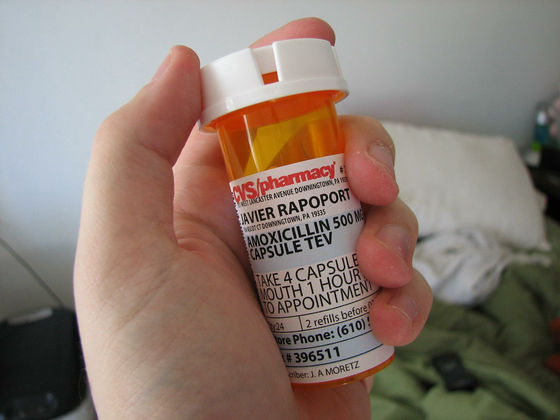Criticism that the price of medicines is rising due to an extraordinary margin by intermediaries

In the United States of medical practice, pharmacy benefit management (Pharmacy Benefit Manager: PBM) program has been adopted. In the PBM program, the intermediary adjusts the price of drugs between pharmaceutical companies, pharmaceutical pharmacies, insurance companies, and patients, but if the price of medicines does not go down quite because of this hollowing out company It has been pointed out.
The Secret Drug Pricing System Middlemen Use to Rake in Millions
https://www.bloomberg.com/graphics/2018-drug-spread-pricing/
In Japan, pharmacies sell drugs to patients based on the prescription given by doctors. The price of medical drugs to which insurance is applied is decided by the Ministry of Health, Labor and Welfare. Meanwhile, in the United States, the government can not decide the drug price, so the pharmaceutical company can freely set the drug price.
Therefore, an intermediary of PBM who made a large contract from pharmaceutical pharmacy, insurance company, etc. will negotiate price with pharmaceutical company. The aim of the PBM program is to prevent intermediate prices from rising drug prices by intermediaries purchasing large quantities of medicines cheaply and widely dispatched. A PBM intermediary sells the medicine to the customer according to the prescription, and the pharmaceutical pharmacy receives the remuneration from the intermediary by giving a prescription.
Mr. Mark Fraum, a pharmacist in Iowa Province, issued a drug prescription to the state prison. Based on that prescription, CVS Health, which was in charge of managing the state's drug benefit plan, sold drugs to jail and at the same time paid compensation to pharmacies managed by Furama.

by Javier Rapoport
However, Mr. Frahm read the public notice in the newspaper and noticed that "compensation paid by CVS Health" and "price actually sold by CVS to prison" are far apart. For example, in the case of one common antipsychotic bottle, Furm received a drug price from CVS Health of $ 5.73 (about 640 yen), whereas the price actually sold by CVS Health to prison It was 198.22 dollars (about 22,000 yen).
Mr. Fraum pointed out that there is an extreme price difference between the fee paid to the pharmacy and the actual selling price and said, "Everyone thought PBM intermediaries are doing business fairly" It is.
Generic drugs that account for almost 90% of prescription drugs dispensed in the United States are handled cheaper than new drugs because they do not incur costs such as patent fees and development costs. However, as the selling price set by the PBM mid-seller is the Medicare program, which is medical insurance for low-income people and the elderly, most of the drug prices that are rising due to the added margin are the states The government will pay. In the United States, these generic drugs are also handled by PBM intermediaries, Bloomberg points out that a margin of several trillion yen in size is being paid by state governments to intermediaries in one year.
Actually, when Bloomberg examined price differences between "medicine fee" and "actual selling price" for some medicines, although the selling price itself is decreasing, the price difference has definitely spread widely understood. The following image is a graph of the change in sales price (black line) in ohio state and remuneration (phlegm line) to pharmacies of leukemia drug "Imatinib 400 mg". In the second quarter of 2016, you can see that the price difference which was 482 dollars (about 54,000 yen) has expanded to 3342 dollars (about 370 thousand yen) in the fourth quarter of 2017.

The graph below shows price differences in New York State of "aripiprazole 5 mg" prescribed for schizophrenia and depression. Aripiprazole is a generic antipsychotic, and although the selling price sharply declined in 2017, the price difference between the remuneration to the pharmacy and the selling price is still spreading.

The graph showing the price difference trend of 'Entecavir 0.5 mg', a generic remedy for hepatitis B, prescribed in Indiana, is as follows. The price difference, which was 122 dollars (about 13,000 yen) in the second quarter of 2015, has spread to 709 dollars (about 77,000 yen) in the fourth quarter of 2017. In the fourth quarter of 2017, approximately 85% of the selling price is the margin of an intermediary.

Great criticism is gathered for such a large margin by PBM intermediate companies. In May 2018, President Cardinba showed a policy of eliminating it as having acquired a great wealth, strongly criticizing the PBM program as failing.
Some states, including West Virginia and Pennsylvania, have begun reviewing the application of PBM in the Medicaid program. Ohio also states that it is planning to prepare a detailed report on expanding the price difference of pharmaceuticals and plan to terminate the contract with CVS Health in 2019.
Tom Betti, Public Relations at the Medicaid Department in Ohio states, "We are planning to open the black box all at once, PBM intermediaries keep secret how the prices are determined, I am trying my best. " Meanwhile, CVS Health, which had been operating in Ohio State, has appealed the state to block the publication of reports on price differences between pharmaceuticals.
Related Posts:
in Note, Posted by log1i_yk







